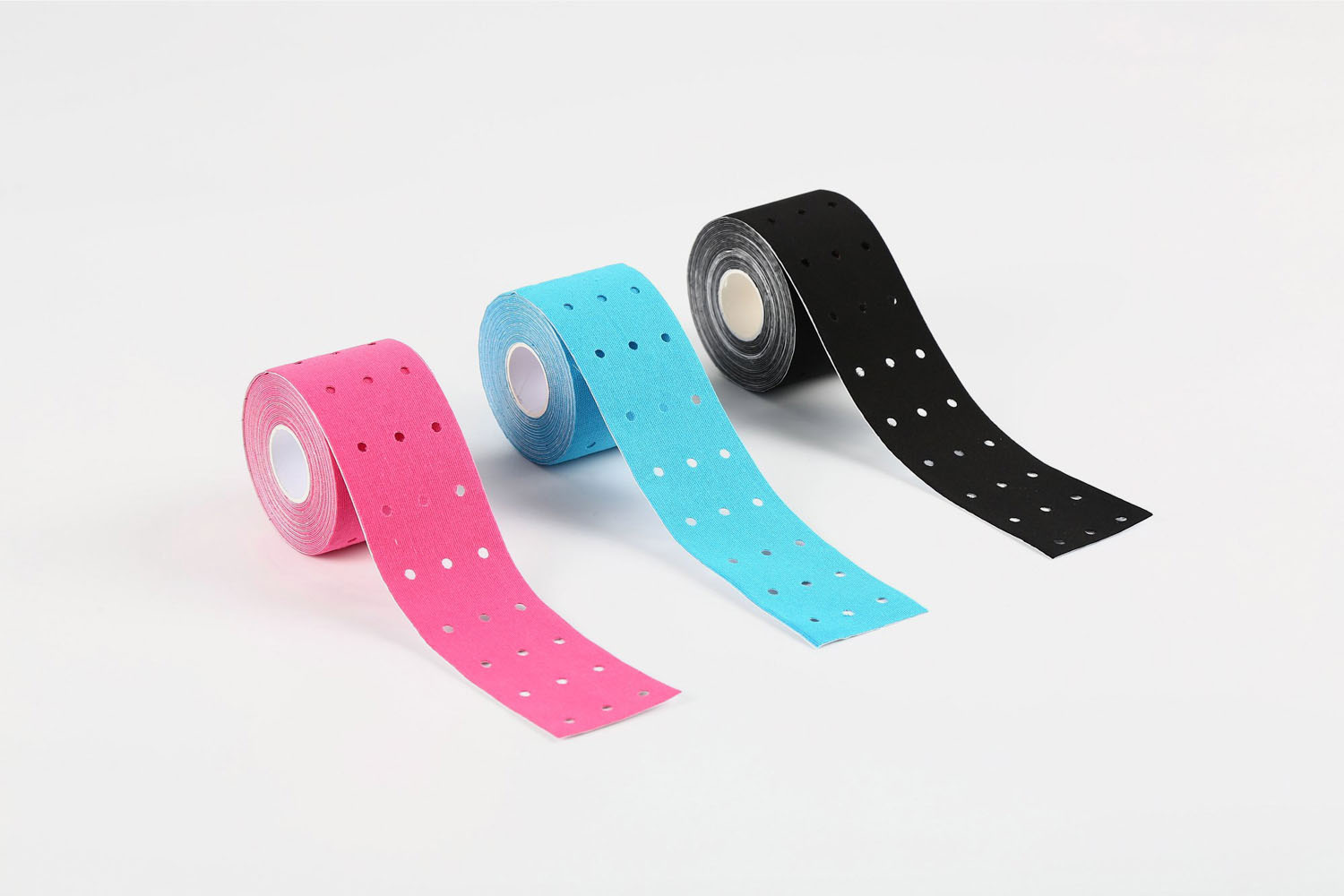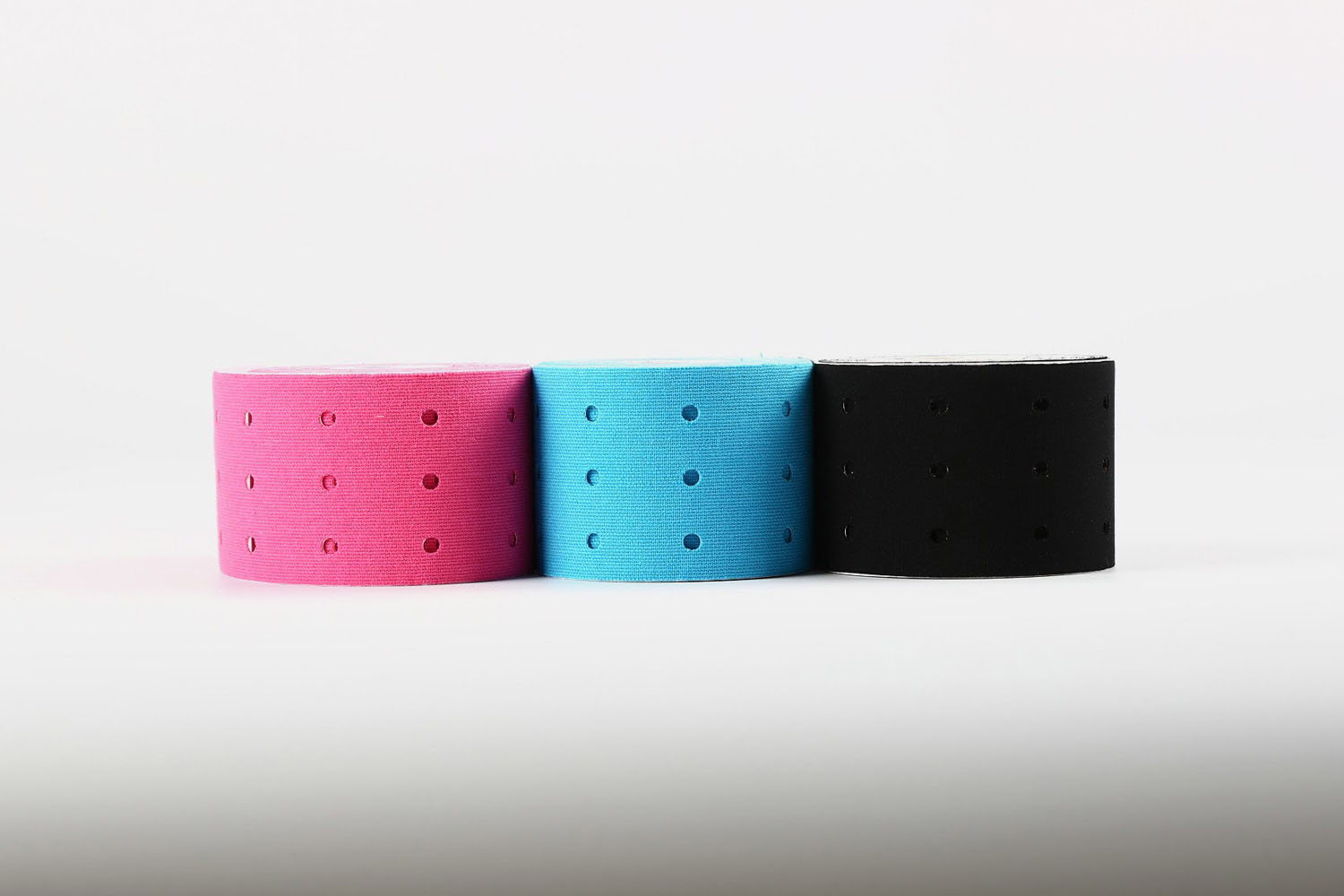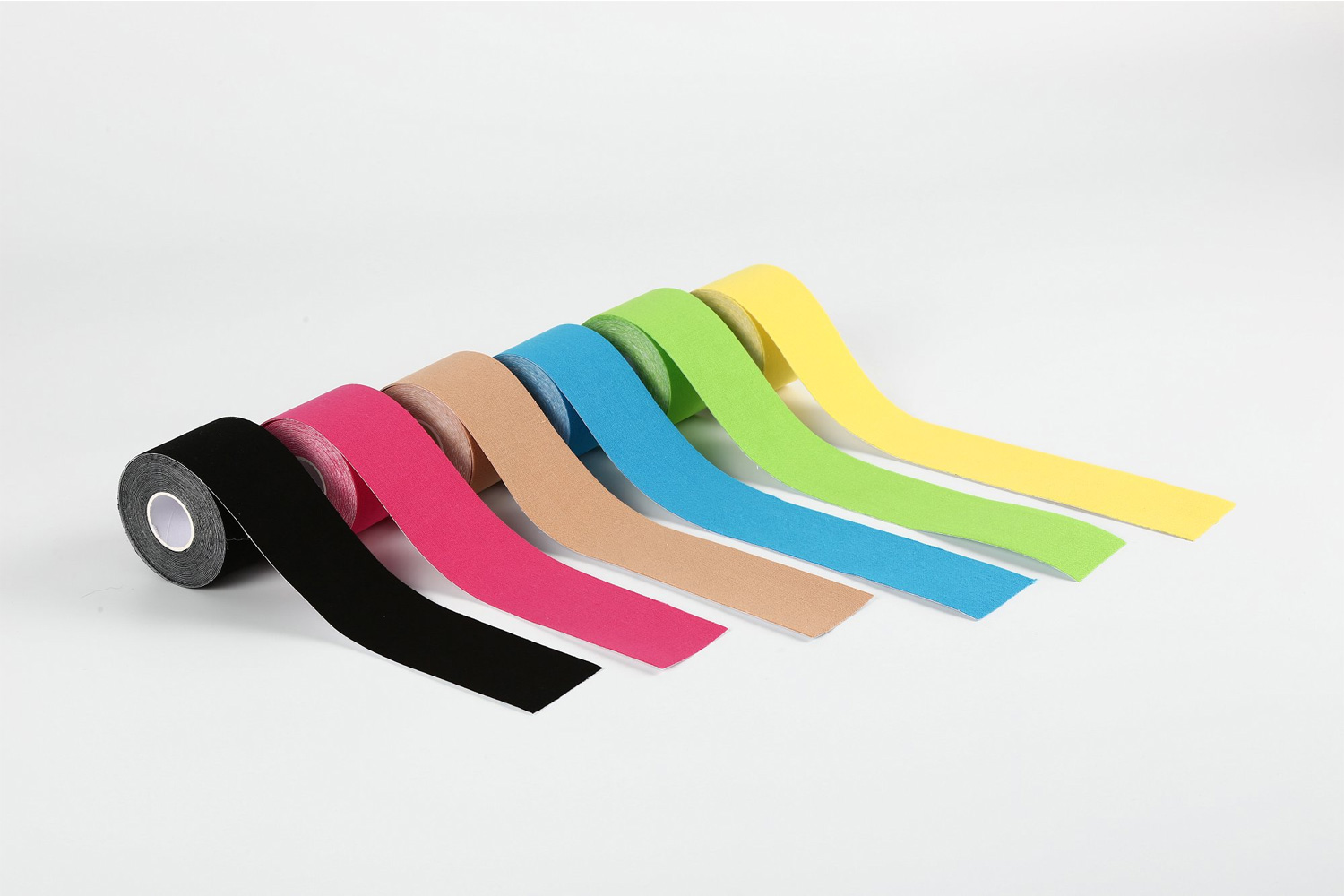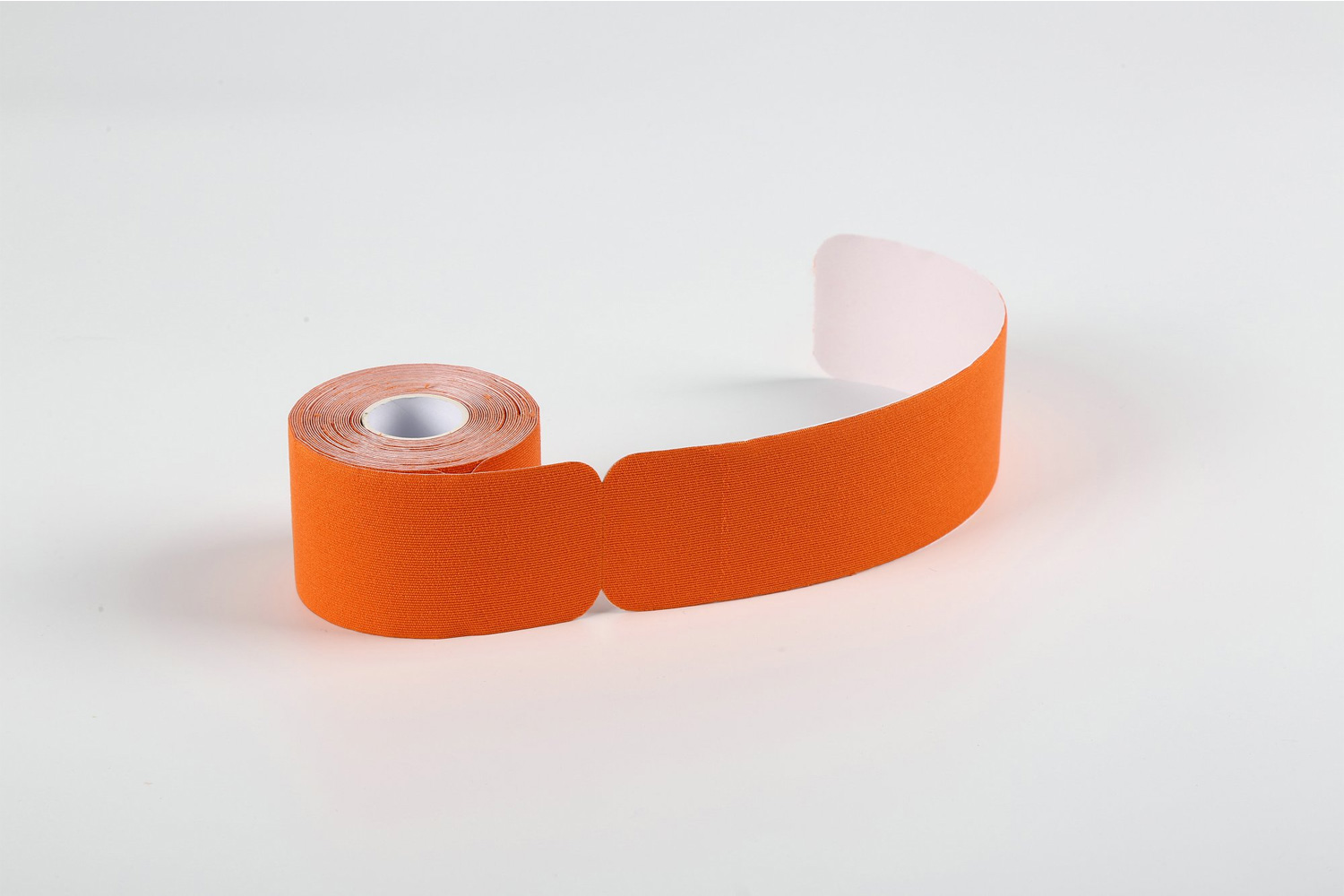Instructions for use of Ventilate Kinesiology Tape
Instructions for Using Ventilate Kinesiology Tape in a Muscle Patch System
Preparation:
Clean and dry the area where the muscle patch will be applied. It’s important that the skin is free from oils, lotions, or sweat.
If necessary, trim the hair in the area to ensure the tape adheres better and more comfortably.
Apply the Muscle Patch:
Peel off the backing paper from the adhesive side of the muscle patch (if it’s a pre-made patch with kinesiology tape included).
Position the patch on the target area, ensuring it covers the muscle or joint in need of support or relief.
Smooth the edges of the patch to ensure that it adheres well without air bubbles or wrinkles.
Position the Ventilate Kinesiology Tape (If Separate):
If the Ventilate Kinesiology Tape is not pre-applied and is a separate component, you will need to apply it as part of the patch system.
Cut the kinesiology tape to the appropriate length and apply it over the area, following the guidelines mentioned in the previous section (either with a slight stretch or minimal tension, depending on the intended use).
Rub the tape gently to activate the adhesive. If there are multiple strips of kinesiology tape in the muscle patch, arrange them to form the desired support or relief structure.
Ensure Proper Application:
Make sure that both the kinesiology tape and any other elements of the muscle patch (e.g., cooling or heating components) are positioned properly.
Ensure the kinesiology tape and patch are securely adhered to the skin and that there is no discomfort or irritation.
It’s important to maintain movement for the tape to work effectively.
Wear the Patch:
The muscle patch with Ventilate Kinesiology Tape should typically be worn for several hours or as recommended (e.g., 3–5 days) depending on the specific product guidelines.
Ensure that you don’t stretch the tape or patch too much during activities.
Removing the Patch:
Carefully remove the patch (or tape) by peeling it off gently in the direction of hair growth, starting from one end and pulling slowly to minimize discomfort.
If necessary, use warm water or a medical adhesive remover to help loosen the adhesive.Instructions for use of Ventilate Kinesiology Tape
Instructions for Using Ventilate Kinesiology Tape in a Muscle Patch System
Preparation:
Clean and dry the area where the muscle patch will be applied. It’s important that the skin is free from oils, lotions, or sweat.
If necessary, trim the hair in the area to ensure the tape adheres better and more comfortably.
Apply the Muscle Patch:
Peel off the backing paper from the adhesive side of the muscle patch (if it’s a pre-made patch with kinesiology tape included).
Position the patch on the target area, ensuring it covers the muscle or joint in need of support or relief.
Smooth the edges of the patch to ensure that it adheres well without air bubbles or wrinkles.
Position the Ventilate Kinesiology Tape (If Separate):
If the Ventilate Kinesiology Tape is not pre-applied and is a separate component, you will need to apply it as part of the patch system.
Cut the kinesiology tape to the appropriate length and apply it over the area, following the guidelines mentioned in the previous section (either with a slight stretch or minimal tension, depending on the intended use).
Rub the tape gently to activate the adhesive. If there are multiple strips of kinesiology tape in the muscle patch, arrange them to form the desired support or relief structure.
Ensure Proper Application:
Make sure that both the kinesiology tape and any other elements of the muscle patch (e.g., cooling or heating components) are positioned properly.
Ensure the kinesiology tape and patch are securely adhered to the skin and that there is no discomfort or irritation.
It’s important to maintain movement for the tape to work effectively.
Wear the Patch:
The muscle patch with Ventilate Kinesiology Tape should typically be worn for several hours or as recommended (e.g., 3–5 days) depending on the specific product guidelines.
Ensure that you don’t stretch the tape or patch too much during activities.
Removing the Patch:
Carefully remove the patch (or tape) by peeling it off gently in the direction of hair growth, starting from one end and pulling slowly to minimize discomfort.
If necessary, use warm water or a medical adhesive remover to help loosen the adhesive.









